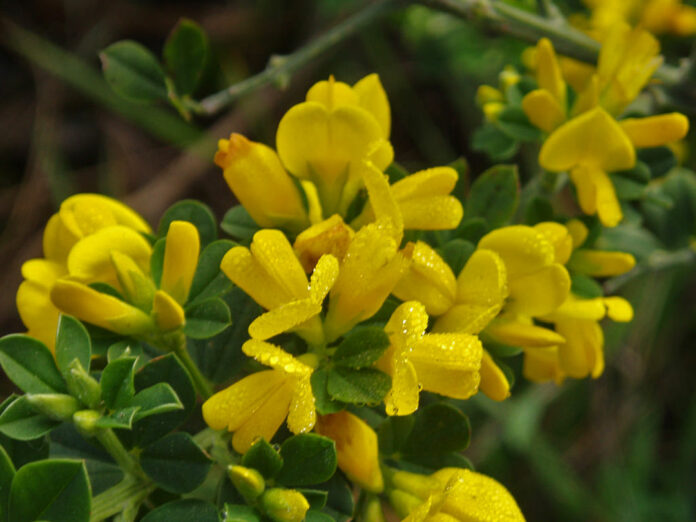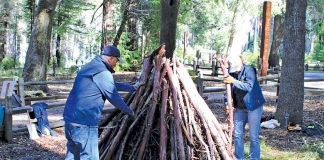The heavy winter rains and a warm, sunny spring have sparked one of the greatest Callifornia wildflower blooms in decades. It has also has fueled a similar bloom among “non-native,” “exotic” or “invasive” species.
The beautiful yellow flowers of French broom, or Genista monspessulana, blanket many hillsides in the Santa Cruz Mountains, and the fast-spreading, nitrogen-guzzling member of the wild pea family threatens to overwhelm a 180-acre nature preserve that has been owned by the San Lorenzo Valley Water District for 40 years: the Olympia watershed, located next to the Zayante Fire Station, off Zayante Road in Felton.
An eradication plan for French broom aimed at preserving the plant diversity of the watershed revealed earlier this month includes use of the a controversial herbicide glyphosate, which last month was officially labeled carcinogenic by the state of California, following similar action by the World Health Organization. The Environmental Protection Agency disagrees, and allows its use, but there are allegations of EPA collusion with Monsanto, maker of Roundup. Glyphosate is the most widely used herbicide in the world.
Revelations of the water district plan touched off what one director called a “whirlwind” of controversy, with hundreds of social media posts, and a big turnout at a meeting in Felton last week.
The district this week also backtracked on a statement published on its website that said Fish and Wildlife “prohibited” pulling of the French broom by hand.
After an inquiry by the Press Banner, the district said:
“Monday and Tuesday this week, District staff sought clarification from the USFWS regarding the new permit request for broom removal in the Olympia Watershed. Through phone conversations between professional staff at the two agencies, the District has learned that there may be flexibility in the guidelines for the new permit that would enable the broom to be pulled.”
In the past month, there were new developments that likely will derail any eradication efforts for a year or more, the Press Banner learned this week.
.The developments aren’t related to the plan to use a sponge applicator to 19,000 plants in the watershed, but to a little beetle that spends most of its life as an underground grub: the Mount Hermon June Beetle, an endangered species that lives only in the Zayante sand hills.
“Nothing really stands out that raised any big red flags,” Chad Mitcham, U.S. Fish and Wildlife biologist wrote the district on March 31.
But he said the district would need to seek a “recovery permit” from Fish and Wildlife, to cover up any beetle larvae disturbed by any action – cutting, pulling, digging or dabbing – in the broom/acacia eradication effort.
He said he would try and fast-track that process, but that it would take six months to a year to process, followed by a review and decision process.
That means the district faces months of public debate over herbicide use.











